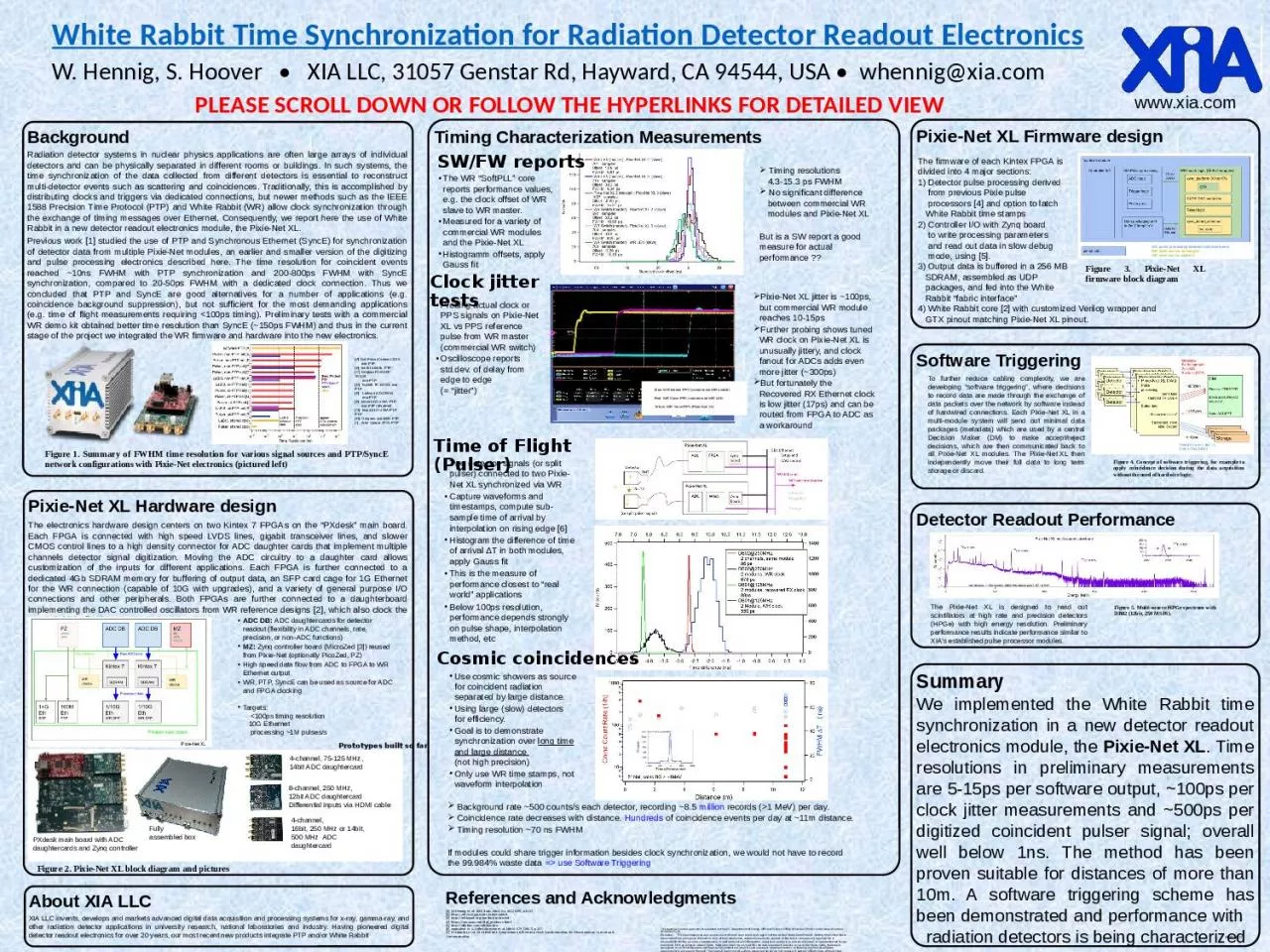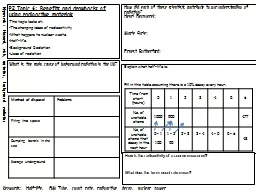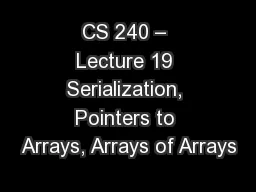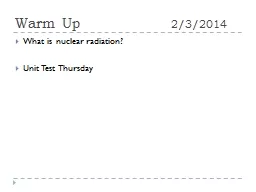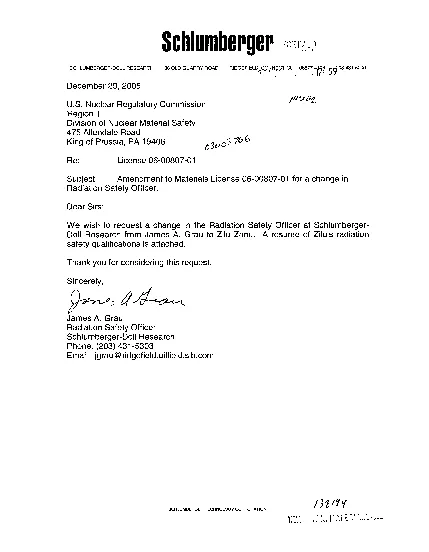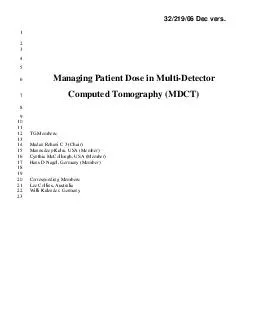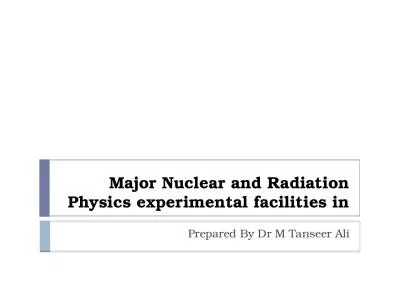PPT-Background Radiation detector systems in nuclear physics applications are often large
Author : grace3 | Published Date : 2023-11-11
Previous work 1 studied the use of PTP and Synchronous Ethernet SyncE for synchronization of detector data from multiple PixieNet modules an earlier and smaller
Presentation Embed Code
Download Presentation
Download Presentation The PPT/PDF document "Background Radiation detector systems in..." is the property of its rightful owner. Permission is granted to download and print the materials on this website for personal, non-commercial use only, and to display it on your personal computer provided you do not modify the materials and that you retain all copyright notices contained in the materials. By downloading content from our website, you accept the terms of this agreement.
Background Radiation detector systems in nuclear physics applications are often large: Transcript
Download Rules Of Document
"Background Radiation detector systems in nuclear physics applications are often large"The content belongs to its owner. You may download and print it for personal use, without modification, and keep all copyright notices. By downloading, you agree to these terms.
Related Documents

